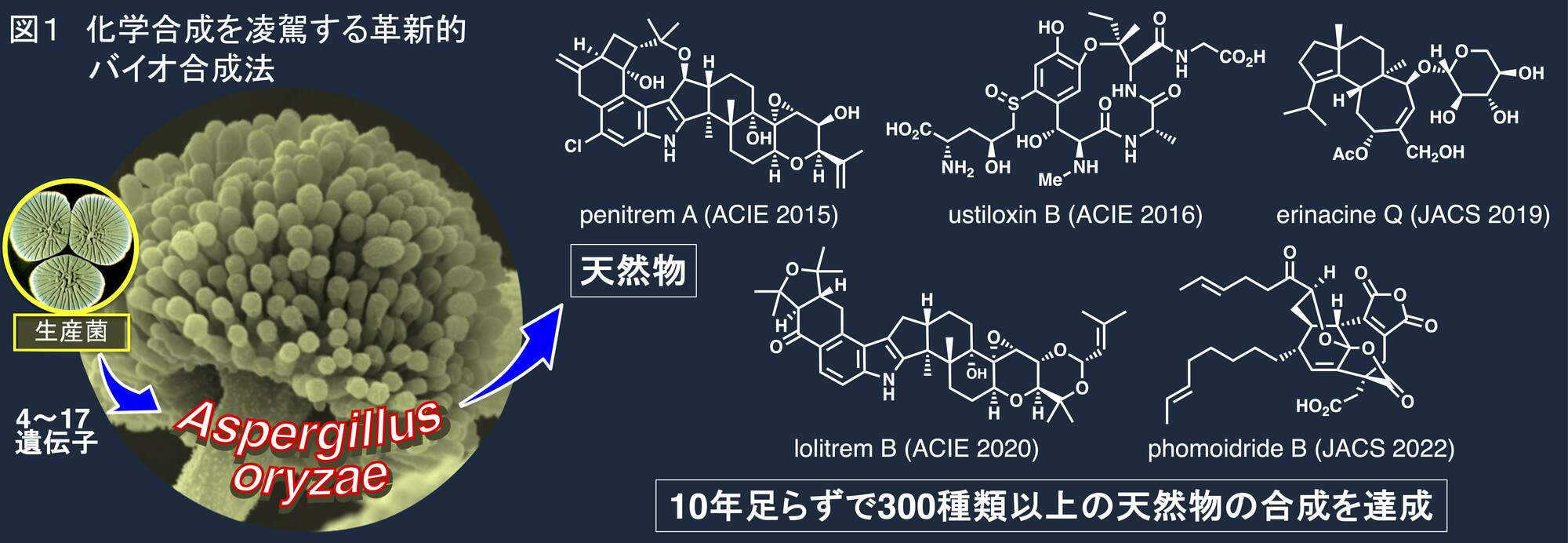Research
Total biosyntheis of natural products
【Abstract】
Natural products produced by living organisms are synthesized through highly efficient and sophisticated methods. If we could reproduce and control these natural “manufacturing” processes artificially, we believe we could not only reduce the use of depletable resources but also create new molecules through an environmentally friendly approach, thus contributing to the betterment of humanity. Through this technological development, we aim to help create a sustainable future.
In our lab, we have developed an innovative biocatalytic biosynthesis method to realize this vision. The key features of our method are:
1 Clear identification of all substrates, products, and enzymes involved in every step of the process, similar to total synthesis
2 High yield, up to 600 mg/L
3 Versatility, applicable to a wide variety of natural products regardless of their chemical structure
Over the past 10 years, we have successfully biosynthesized more than 300 types of natural products. This achievement demonstrates that our method could serve as a significant breakthrough in the field of manufacturing. Furthermore, biosynthesis technology is gaining global attention and is expected to play a central role in Japan's 5th Industrial Revolution (for example: link 1, linke 2).
Moving forward, we aim to explore how to utilize the natural products we create and further investigate their roles in nature. In addition, we will build on these findings to develop new functional molecules. This technology holds great potential as a foundation for future pharmaceuticals and environmentally friendly materials. Would you like to join us in this project and help lead the shift toward sustainable, low-energy synthesis technologies, making a game-changing impact in manufacturing?
【Keywords】
Natural products, Total biosynthesis, Environmental benign
【Skills learned】
Isolation and structure determination of natural products.
Cloning of target gene, Genome editing technology
【Publications】
Hirsutane: JACS Au 2025, 5, 740-746.
Eremophilane:ACS Chem. Biol. 2024, 19, 861-865.
Phomoidride:J. Am. Chem. Soc. 2022, 144, 20998–21004.
Phialotide:Angew. Chem. Int. Ed. 2021, 60, 23403-23411.
Lolitrem:Angew. Chem. Int. Ed. 2020, 59, 17996-18002.
